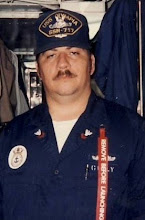CECIL WILLIAM BUCKLEY
Commander (then Lieutenant), Royal Navy; HMS
MirandaBorn: 7 October 1828, Patricroft, Lancashire
Died: 7 December 1872, Funchal, Madeira

Citation: Lord Lyons reports that—"Whilst serving as junior Lieutenant of the 'Miranda,'this Officer landed in presence of a superior force, and set fire to the Russian stores at Genitchi," and "he also performed a similar
desperate service at Taganrog."
The first service referred to occurred after the shelling of the town of Genitchi [in the Crimea], on the 29th May, 1855. After mentioning that the stores were in a very favourable position for supplying the Russian Army, and that, therefore, their destruction was of the utmost importance, Captain Lyons writes: "Lieutenant Cecil W. Buckley, Lieutenant Hugh T. Burgoyne, and Mr. John Roberts, gunner, volunteered to land alone, and fire the stores, which offer I accepted, knowing the imminent risk there would be in landing a party in presence of such a superior force, and out of gun-shot of the ships. This very dangerous service they most gallantly performed, narrowly escaping the Cossacks, who all but cut them off from their boat."
(Despatch from Admiral Lord Lyons, 2nd June, 1855, No. 419.)
The second volunteer service was performed while the town of Taganrog [Russia] was being bombarded by the boats of the Fleet, and is thus recorded by Captain Lyons:—"Lieutenant Cecil Buckley, in a four-oared gig, accompanied by Mr. Henry Cooper, Boatswain, and manned by volunteers, repeatedly landed and fired the different stores and Government buildings. This dangerous, not to say desperate service (carried out in a town containing upwards of 3,000 troops, constantly endeavouring to prevent it, and only checked by the fire of the boats' guns), was most effectually performed."
(Despatch from Admiral Lord Lyons, 6th June, 1855, No. 429.)
(London Gazette issue 21971 dated 24 Feb 1857, published 24 Feb 1857.)JOHN TALBOT BURGOYNE
Commander (then Lieutenant), Royal Navy; HMS
SwallowBorn: 17 July 1833, Dublin, Ireland
Died: 7 September 1870, off Cape Finisterre, Spain

Citation: Lord Lyons writes:—"As Senior Lieutenant of the 'Swallow,' this Officer landed with Lieutenant Buckley, and Mr. J. Roberts, Gunner, in presence of a superior force, and set fire to the stores at Genitchi, a service of
imminent risk."
(Despatch from Admiral Lord Lyons, 2nd June, 1855, No. 419.)
N.B.—This service has been previously described in the preceding notice of Lieutenant Buckley's services.
(London Gazette issue 21971 dated 24 Feb 1857, published 24 Feb 1857.)Note: Captain J T Burgoyne VC was the commanding officer of HMS Captain when that ship capsized in a gale off Cape Finisterre.JOHN ROBERTS (or ROBARTS)
Gunner, Royal Navy; HMS
ArdentBorn: 1818, Chacewater, Cornwall
Died: 17 October 1888, Southsea, Hampshire

Citation: This Warrant Officer landed with Lieutenants Buckley and Burgoyne at Genitchi, in presence of a superior force, and set fire to the Stores, a service of
imminent risk.
(Despatch from Admiral Lord Lyons, 2nd June, 1855, No. 419.)
(London Gazette issue 21971 dated 24 Feb 1857, published 24 Feb 1857.)HENRY COOPER
Boatswain, Royal Navy; HMS
MirandaBorn: 1825, Plymouth, Devon
Died: 15 July 1893, Torpoint, Cornwall

Citation: Performed the desperate service of landing at Taganrog in presence of a large force, to set fire to the Government Stores. See preceding Memoir of Commander Buckley.
(Despatch from Admiral Lord Lyons, 6th June, 1855, No. 429.)
(London Gazette issue 21971 dated 24 Feb 1857, published 24 Feb 1857.)Note: These were the first four Victoria Crosses posted in the London Gazette ("gazetted"). At the first investiture of the Victoria Cross, on 26 June 1857 at Hyde Park, Burgoyne was the third, Robarts the sixth, and Cooper the eighth man to actually be presented with the medal. (Commander Buckley was not present on that occasion.)
 The Andrew Carnegie Medal, named for the Scottish philanthropist, has been awarded annually since 1937 to the writer of "an outstanding book for children." In addition to the gold medal, the winner receives £500 worth of books to donate to a library of his/her choice.
The Andrew Carnegie Medal, named for the Scottish philanthropist, has been awarded annually since 1937 to the writer of "an outstanding book for children." In addition to the gold medal, the winner receives £500 worth of books to donate to a library of his/her choice. The Kate Greenaway Medal, named for the nineteenth-century artist, has been awarded annually since 1957 to the illustrator of "an outstanding book in terms of illustration for children and young people." As with the Carnegie Medal, the winner receives a golden medal and £500 worth of books to donate to a library of his/her choice; since 2000, the winner has also been awarded the £5000 Colin Mears Award.
The Kate Greenaway Medal, named for the nineteenth-century artist, has been awarded annually since 1957 to the illustrator of "an outstanding book in terms of illustration for children and young people." As with the Carnegie Medal, the winner receives a golden medal and £500 worth of books to donate to a library of his/her choice; since 2000, the winner has also been awarded the £5000 Colin Mears Award.
















